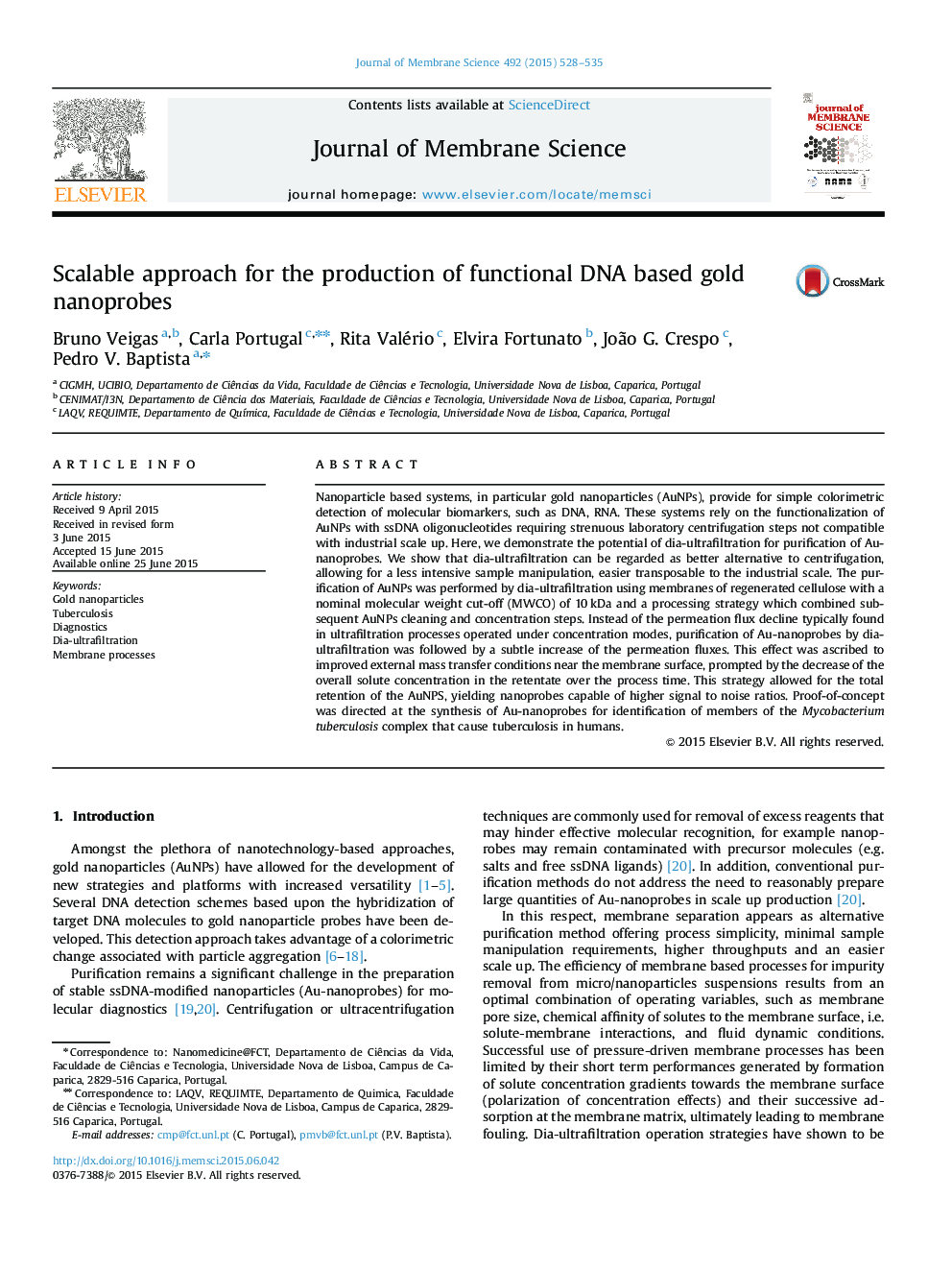| Article ID | Journal | Published Year | Pages | File Type |
|---|---|---|---|---|
| 7021277 | Journal of Membrane Science | 2015 | 8 Pages |
Abstract
Nanoparticle based systems, in particular gold nanoparticles (AuNPs), provide for simple colorimetric detection of molecular biomarkers, such as DNA, RNA. These systems rely on the functionalization of AuNPs with ssDNA oligonucleotides requiring strenuous laboratory centrifugation steps not compatible with industrial scale up. Here, we demonstrate the potential of dia-ultrafiltration for purification of Au-nanoprobes. We show that dia-ultrafiltration can be regarded as better alternative to centrifugation, allowing for a less intensive sample manipulation, easier transposable to the industrial scale. The purification of AuNPs was performed by dia-ultrafiltration using membranes of regenerated cellulose with a nominal molecular weight cut-off (MWCO) of 10Â kDa and a processing strategy which combined subsequent AuNPs cleaning and concentration steps. Instead of the permeation flux decline typically found in ultrafiltration processes operated under concentration modes, purification of Au-nanoprobes by dia-ultrafiltration was followed by a subtle increase of the permeation fluxes. This effect was ascribed to improved external mass transfer conditions near the membrane surface, prompted by the decrease of the overall solute concentration in the retentate over the process time. This strategy allowed for the total retention of the AuNPS, yielding nanoprobes capable of higher signal to noise ratios. Proof-of-concept was directed at the synthesis of Au-nanoprobes for identification of members of the Mycobacterium tuberculosis complex that cause tuberculosis in humans.
Related Topics
Physical Sciences and Engineering
Chemical Engineering
Filtration and Separation
Authors
Bruno Veigas, Carla Portugal, Rita Valério, Elvira Fortunato, João G. Crespo, Pedro V. Baptista,
